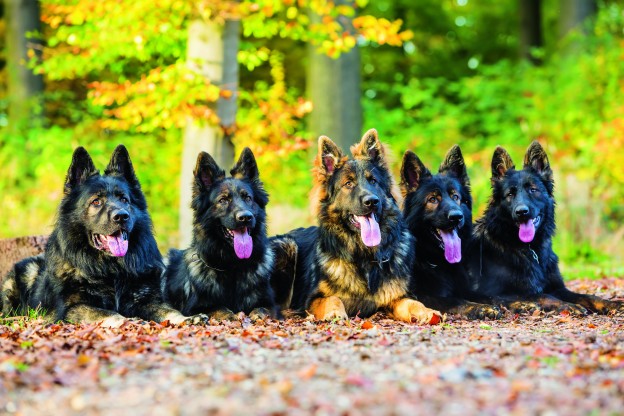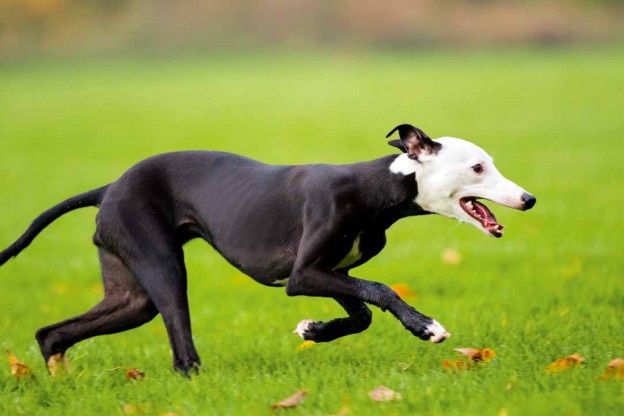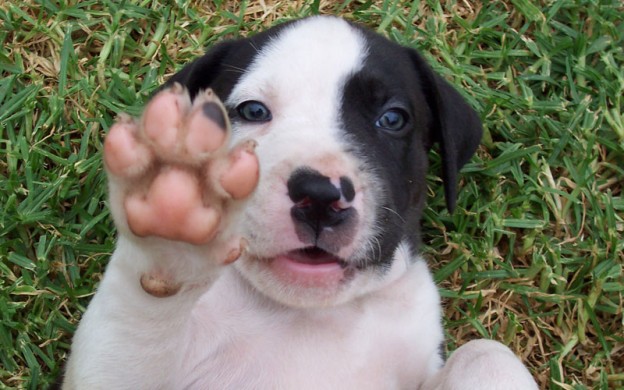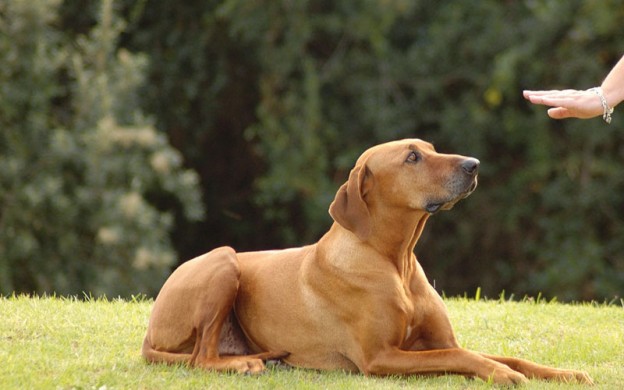Who’s pulling who? Dog trainer Karin Larsen Bridge shows you how to walk your dog without pulling the lead.
For many people, teaching their dog to walk on a lead without pulling is the biggest training problem they face as pet owners. From the dogs perspective, of course, you are the problem Why bother taking me for a walk if you are going to stop me investigating the world of scent that beckons me? After all, your dogs nose is his eyes to the world.
So what we need is a happy compromise whereby your shoulders are not yanked from their sockets and your dog is still able to do some environmental exploration. Here are some strategies that will help you:
1. Use a longer lead
For a pleasure walk, I like to offer my dog the full length of a two-metre lead. The deal is, you can have that length to do with as you please; I will not shorten it or pull against it, however, if you pull against it, we will stop.
It is very important to establish the principle that a lead should be soft and light, not taut like a water ski rope. Dogs have an opposition reflex, so the more you pull one way, the more they will pull the other. Give your dog a full length of lead and work hard not to shorten it. For some dogs, this extra length alone reduces pulling considerably, as it allows your dog to move from side to side, smell the trees and cock his leg without pulling you off the footpath.
2. Establish a reward zone
Teach your dog that there are rewards for hanging somewhere around the vicinity of your left leg (or right if you prefer). The easiest way to do this is to walk briskly, clockwise around a 20-metre circle, holding only the end of your lead in your right hand.
Have a few treats ready in your left hand, but do not be tempted to put your hand in front of the dogs face as a lure. The hand should only come down when you deliver a treat. Working in a circle helps you to focus on what your dog is doing without worrying about where you are going, running into trees or turning. When your dog is in the vicinity of your left leg, say yes! and deliver a treat down your leg to your dog.
You want your dog to learn there is a reward zone around your left leg, where good things fall from the sky. If your dog moves too far ahead, stop, call him back and again reward from your left knee. You want the dog to know there are good things at your end of the lead, not just out in front where the good smells are.
3. Turn and steady
When your dog pulls ahead of you, say steady and do an about turn moving the opposite direction. The turn and steady game achieves four things:
- It stops your dog from constantly being in front and leading the way.
- It causes the dog to pass the reward zone (your left leg), providing an opportunity to reward.
- If your dog wont take treats out on a walk, it still prevents your dog from always leading the way.
- It allows you to walk your dog for as long as you like, without having to stop, even if you don’t actually go very far.
Repeat until your dog realises that you’re the one dictating the direction of the walk. Adding the word steady before each turn will teach your dog there is no point in charging ahead, as you are about to change direction. Eventually steady can be used as a general cue to slow down.
4. Penalty yards
Penalty yards is a game of understanding. At the moment, your dog is probably convinced that the fastest way to get to the off-leash park, bush track or lamppost is to pull you there no matter how much resistance you apply. You need to turn this picture. Penalty yards teaches your dog that if there is pressure on your collar, we move away from where you would like to go. If there is no pressure, we move towards the place you would like to go.
Start with your dogs bowl and some really tasty treats and/or a person your dog loves, standing at one end of the garden. Show your dog the treats/person and get him really excited this is your target. Now move back with your dog on lead to a starting line some distance away. Start moving toward your target if the lead tightens, say too bad and immediately turn around and move back quickly to behind your start line. If the lead is loose even if only when moving back toward the start line talk to your dog and praise him.
He needs to know that this is the behaviour you would like from him. This is a great exercise for teaching your dog that you are relevant not just a go-between from house to park. Repeat until you can walk all the way to your target without the lead tightening at all then release your dog to the treats and praise.
5. Training aids
Training will always take a little longer to be effective than a management tool such as a head halter or walking harness. These tools were designed to get you and your dog walking safely sooner, and should always be considered a viable option.







